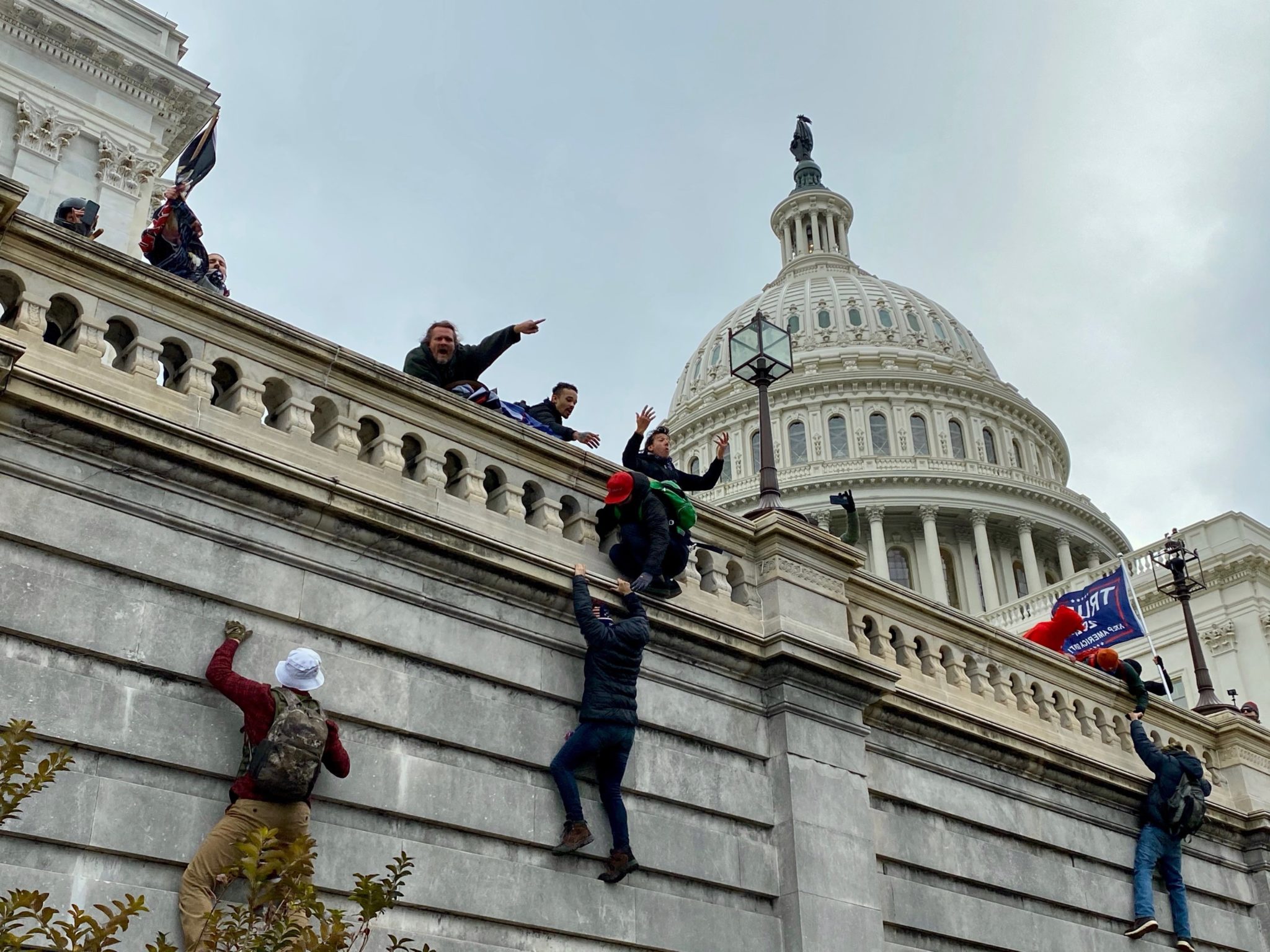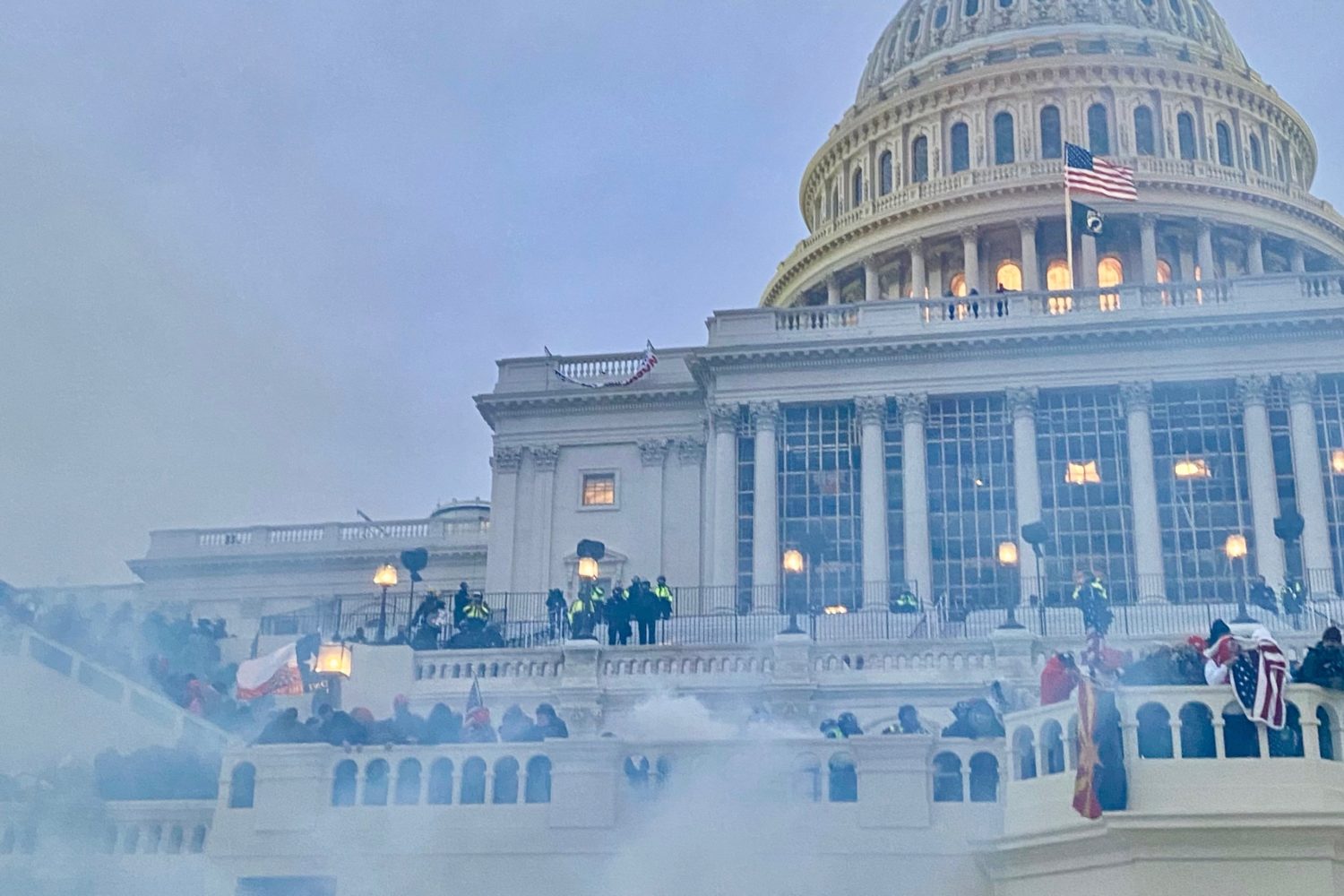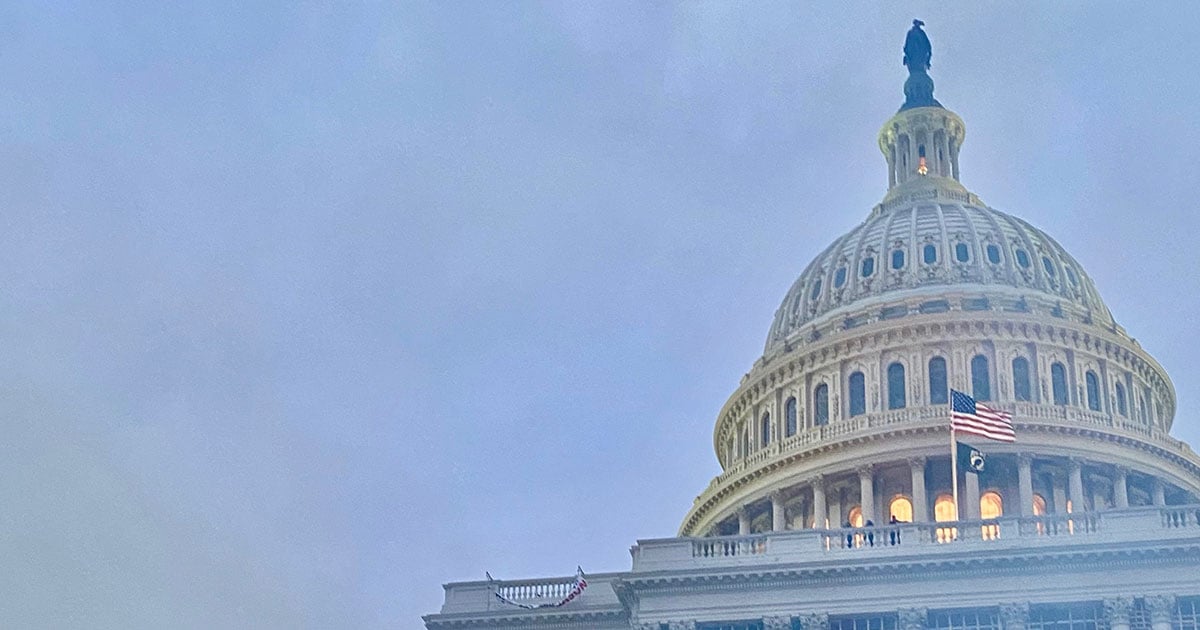Facebook says it removed photojournalists’ pictures of last week’s riot at the US Capitol by mistake and apologizes to anyone impacted by what it refers to as possible “mistakes.”
“We designated the Storming of the Capitol as a violating event under our Dangerous Organizations policy,” a Facebook spokesperson tells Washingtonian. “This means that we’ll remove all content that praises, supports, or represents the event unless it is shared in an allowable context such as news reporting or academic discussion, or if it is shared in a manner that clearly condemns the event. Discerning the context of all posts related to the event is challenging work and at times we may make mistakes. We have restored content that was removed in error, and apologize to those impacted.”
Those impacted include photographer Michael Nigro, who covered the events last week in DC. Since then, he says, every shot he posted on his Facebook or Instagram accounts from inside the Capitol building vanished. He was also unable to post, comment, or livestream on his Facebook account. Nor could he get either service to respond to him: “It is like talking/typing into a void,” he tells Washingtonian. “It would be very easy for a human being to look at my page and then make a decision as to whether I am a “conspirator” or a journalist.”
Adam Gray, the chief photographer of the press agency SWNS, says he’s lost four posts since Wednesday. Sandi Bachom is unable to comment on her Facebook account after she received a warning that a photo she posted showing people heading toward the Capitol “didn’t follow our Community Standards.” She says she wouldn’t even know who to contact at Facebook: “I have no way of reaching them,” she says.

The photographer Mel D. Cole tells Washingtonian he’s had a similar issue—a photograph of Black Trump supporters has been repeatedly doinked. Kyle Terboss, another photographer, tells Washingtonian Instagram on Sunday removed two series of images that had been up for three days from his account. “My photos were not exceptionally violent but they likely identified certain instigators,” he says.
Chris Jones, a photographer for 100 Days in Appalachia, says he filed photos to both his own newsroom and to National Geographic that received hundreds of likes before vanishing. He says the photos have stayed up since he reposted them the next day.
“I am concerned that whatever algorithms social media is using to monitor their sites is causing them to inappropriately warn/threaten visual journalists about their factual posts of editorial images,” Mickey Osterreicher, general counsel for the National Press Photographers Association, tells Washingtonian.
“I’m a legitimate journalist, a Getty contributor,” says Bachom, who lives in New York. “I risked my life on the front lines doing this. It’s not bad enough we do that, but this happens.”



















